New Trends and Challenges in Management
Detailed programme with session schedule is available here.
27 March, 2025, Thursday
- 8:30 – 9:30
- Registration (at the entrance from Virág street)
You can follow the plenary session live here: https://www.youtube.com/live/M3vJeWSSmyc?si=rV-cazuoMnYqSGVU
- Registration (at the entrance from Virág street)
- 9:30 – 13:00
- Plenary session
- 13:00 – 14:00
- Lunch break
- 14:00 – 16:00
- Sessions
- 18:30
- Gala dinner
28 March, 2025, Friday
- 9:00 – 10:15
- Panel discussion: AI in engineering and management
You can follow the panel discussion live here: https://youtube.com/live/2ujxFGmuotA?feature=share
- Panel discussion: AI in engineering and management
- 10:30 – 13:00
- Sessions
- 13:00 – 14:00
- Lunch
Keynote speakers:
Dr. Anna Paraskevopoulou

Title of the presentation: Gender Bias in AI: Manifestations and Consequences
Dr. Anna Paraskevopoulou is an Associate Professor of Management, Faculty Athena Swan Lead and Faculty Lead for Safe and Inclusive Communities RII in the Faculty of Business and Law at Anglia Ruskin University.
Abstract
Purpose
The study examines whether age intersects with gender and race during the initial stage of the hiring process and affects access to vacancies outcomes and wage sorting.
Design/methodology/approach
In order to answer the research question, the study collects data from four simultaneous field experiments in England. The study compares the labour market outcomes of younger White British men with those of older White British men and women, and with those of older Black British men and women. The study concentrates on low-skilled vacancies in hospitality and sales in the private sector.
Findings
The results of this study indicate that older White British men and women, as well as older Black British men and women, experience occupational access constraints and are sorted into lower-paid jobs than younger White British men. The level of age discrimination is found to be higher for Black British men and women. In addition, Black British women experience the highest level of age discrimination. These patterns may well be in line with prejudices against racial minority groups and stereotypical sexist beliefs that the physical strengths and job performance of women decline earlier than those do for men.
Practical implications
If prejudices against older individuals are present, then anti-discrimination legislation may be the appropriate response, especially for racial minorities and women. Eliminating age discrimination in selection requires firms to adopt inclusive human resources (HR) policies at the earliest stages of the recruitment process.
Originality/value
This research presents for the first-time comparisons of access to vacancies and wage sorting between younger male racial majorities and older male racial majorities, older female racial majorities, older male racial minorities, and older female racial minorities. In addition, the driven mechanism of the assigned differences is explored. Because the study has attempted to minimise the negative employer stereotypes vis-à-vis older employees, with respect to the employees' motivation, productivity, and health, such prejudices against older individuals may be considered taste-based discrimination.
Dr. Renatas Kizys

Title of the presentation: Supply Chain Network and Corporate ESG Performance: Polycentric or Monocentric?
Dr. Renatas Kizys is associate professor in Finance & Deputy Head (Research), Department of Banking & Finance, Southampton Business School, University of Southampton, United Kingdom.
Abstract
We examine the relationship between supply chain networks, Environmental, Social, and Governance (ESG) performance, and financial outcomes. The motivation for this research stems from the increasing significance of ESG factors in corporate strategies, coupled with the limited understanding of how supply chain network characteristics impact both ESG and financial performance. Our analysis examines the direct effects of supply chain network size and structure on ESG scores and financial performance, while also exploring the indirect impact through ESG performance. Additionally, we evaluate the influence of the California Transparency in Supply Chains Act of 2011 on corporate sustainability efforts.
We hypothesise that larger and more centralized supply chain networks positively affect corporate ESG performance, particularly in environmental metrics, and enhance financial outcomes, especially return on sales (ROS). We also explore how these networks influence financial performance indirectly via improved ESG scores. Using a dataset of over 16,000 firm-year observations from 3,028 U.S. publicly traded companies, our findings indicate that larger supply chain networks generally lead to better ESG scores, with particular emphasis on environmental indicators. While the financial impact is mixed, network centrality is shown to significantly improve certain financial metrics, such as ROS. This study contributes to the literature by linking supply chain management practices with ESG and financial performance, providing novel insights into the role of supply chain structure in corporate sustainability. The results have important implications for firms seeking to optimise their supply chains to balance sustainability goals with financial success.
doc. Ing. Peter Pažitný, MSc, PhD

Title of the presentation: Healthcare system efficiency in Slovakia and Czech Republic using DEA (2000 – 2020)
Doc. Ing. Peter Pažitný, MSc., PhD. is leader of the Institute for Helthcare Services Management at Prague University of Economics and Business, Faculty of Management.
Abstract
This presentation evaluates the efficiency of the healthcare systems in Slovakia, Hungary, and the Czech Republic over the period 2000–2020 using Data Envelopment Analysis (DEA).
In Slovakia, the analysis reveals persistent inefficiencies compared to other OECD and EU countries. The country consistently ranks among the least efficient healthcare systems due to weak health outcomes, high infant mortality, and low life expectancy. Structural issues such as excessive hospital bed capacity, suboptimal allocation of pharmaceutical spending, and unpredictable state funding contribute to these inefficiencies. The DEA results confirm that Slovakia's healthcare system requires significant policy interventions, particularly in financing, hospital network optimization, and preventive care.
Hungary faces challenges similar to Slovakia, particularly in terms of healthcare funding and patient outcomes. The country struggles with a high burden of preventable diseases, low life expectancy, and a significant urban-rural divide in access to medical services. Despite attempts to reform hospital financing and primary care, inefficiencies persist due to systemic underfunding and workforce shortages. The DEA results indicate that while Hungary has made progress in specific areas, such as public health programs, further structural reforms are needed to enhance efficiency and equity in healthcare delivery.
The Czech Republic demonstrates higher efficiency relative to Slovakia and Hungary. Its healthcare system benefits from a well-established insurance-based model, better financial sustainability, and a more balanced distribution of healthcare services. However, DEA results indicate that the Czech Republic’s efficiency has been gradually declining over time. While it ranked among the more efficient systems in the early 2000s, its relative performance has worsened in recent years, likely due to increasing healthcare expenditures without a corresponding improvement in health outcomes.
The presentation concludes that while the Czech Republic performs relatively well, its efficiency has been declining, and Slovakia and Hungary must address their healthcare inefficiencies through targeted reforms. Improving financial sustainability, optimizing hospital networks, and strengthening preventive care are critical steps toward enhancing healthcare efficiency in the region.
Keywords: Healthcare efficiency, Data Envelopment Analysis (DEA), Slovakia, Hungary, Czech Republic, OECD, health policy, healthcare reform
Prof. Dr. Abbas Al-Refaie

Title of the presentation: Effects of Satisfaction with PV Systems, Advertising, Competition, and Subsidy on Energy Security and CO2 Emissions
Prof. Dr. Abbas Al-Refaie is a Fellow at the Department of Industrial Engineering, School of Engineering, University of Jordan (Amman, Jordan). His research focuses on experimental design, optimization, and engineering management. 2018 he received the Ali Mango Award for distinguished researcher in science in Jordan.
Abstract
Rooftop photovoltaic (RPV) systems, products, and components are energy-efficient technologies that are critical to the transition toward energy sustainability. Typically, the quality of RPV products and services can significantly affect adopter’s satisfaction and willingness to install RPV systems. Moreover, government support is needed to motivate the willingness to install RPV systems through feed-in-tariffs (FiT) and subsidy policies and expand the application of clean energy-efficient technology. To address these issues, the aim of this study is, therefore, to develop two system dynamics models to (1) predict the impacts of adopters’ satisfaction with PV systems through Word-of-mouth (WOM), advertising, and competition on energy goals including the number of PV installations, generated electricity power, and the reduction of CO2 emissions and (2) assess effects of quality of service, complaint reduction, performance ration, payback period and warranty on energy goals. For model (1), results revealed that the predicted cumulative PV installations is 262 MW, the cumulative generated power (kWh) (= 42.5 GWh) will reach 452 GWh, and the cumulative CO2 emission reductions may reach 262 million kg CO2. For the second model, the predicted cumulative RPV installations, generated power, and CO2 emission reductions are 147 MW, GW, 115.6 MWh, and 73.2 million Kg, respectively. Risk assessment and optimization were performed to maximize the three objectives under uncertainty of key variables in both models. In conclusion, the proposed models should provide great assistance to manufacturers, suppliers, and energy policy planners in deciding the adequate actions and developments to boost the development, design, and adoption of PV products and systems in residential buildings.
Prof. Dr. Dan-Cristian Dabija

The results show an accelerated use of technology in shopping, a reassessment of consumer priorities and changing expectations of the shopping experience. The results also allow the delineation of four distinct clusters; they reveal the emergence of new consumption patterns characterized by accelerated digitalization, increased concerns for hygiene and changes in product selection criteria. The sentiment analysis shows clear differences in the perception of these changes and provides an important basis for the adaptation of consumers to the new life situation in the post-crisis context. The research contributes to the understanding of sustainable transformations in consumer behaviour and provides practical implications for adapting retail marketing strategies.
Weronika Kruszelnicka - PhD

José Mendes Machado - PhD habil




